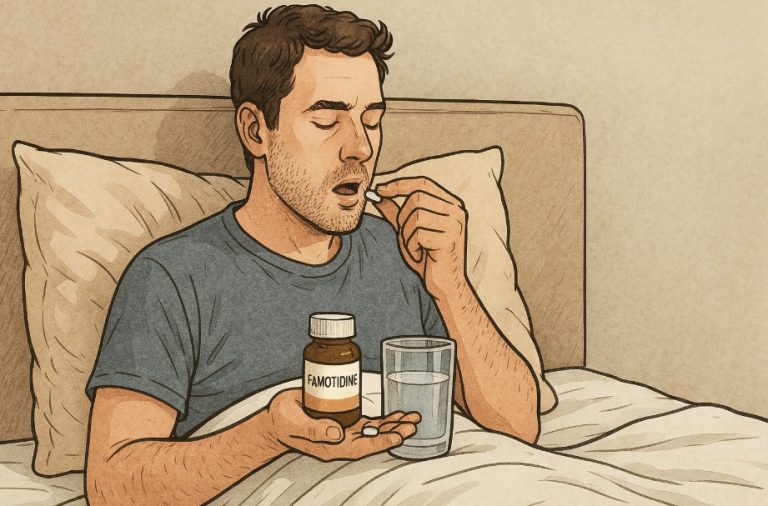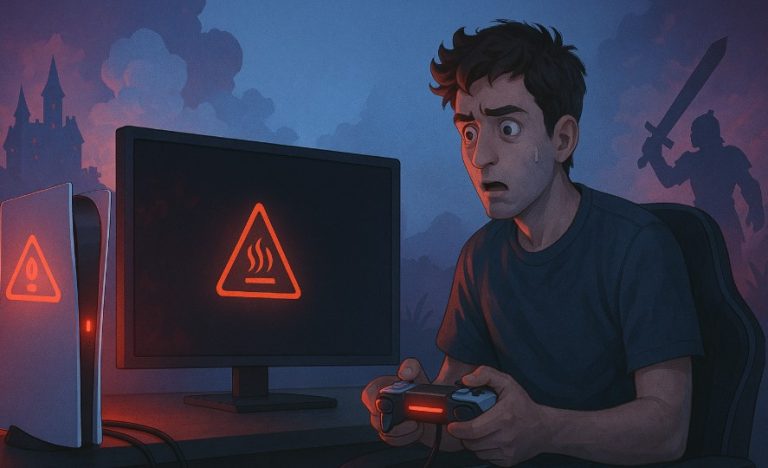Have you ever opened your washing machine after a cycle, only to find your clothes sitting heavy and drenched in water because the drum never spun? Or perhaps you’ve heard the machine hum as though it is working, but the drum refuses to turn? These are common frustrations for households in the UK, and they often lead to one question: why won’t my washing machine spin?
The spin cycle is essential for removing excess water from laundry, and when it fails, clothes come out far wetter than expected, making drying them time-consuming. While the issue might seem like a major breakdown, many causes are simple and easy to fix without professional help. However, some problems are more technical and may require an engineer.
What Are the Common Reasons a Washing Machine Won’t Spin?
A washing machine may stop spinning for a variety of reasons, ranging from simple to complex. Identifying the cause is the first step to solving the problem. Below are the most common issues.
Load Balance and Overloading
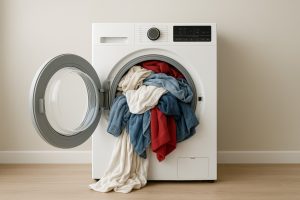
One of the most frequent reasons a washing machine refuses to spin is an uneven or oversized load. When clothes clump to one side, the drum becomes unbalanced. To protect itself, the machine will cancel or slow the spin cycle. Similarly, stuffing too many items into the drum can prevent it from reaching spin speed.
Examples of imbalance issues:
- Washing one heavy duvet without balancing it with lighter items.
- Overloading a 6kg washer with 10kg of laundry.
Door or Lid Lock Problems
Modern washing machines are fitted with safety locks that must engage before the spin cycle begins. If the door is not properly closed or the locking mechanism is faulty, the machine will not spin. Sometimes the issue is as simple as clothing caught in the door seal. In other cases, the lock itself may need replacing.
Drainage Issues and Blocked Filters
The spin cycle cannot start if water remains in the drum. This is usually caused by a blockage in the filter, drain hose, or pump. Coins, lint, and small clothing items can easily clog these parts. A blocked drainage system forces the washing machine to pause until the water is cleared.
Broken or Loose Drive Belt
The drive belt links the motor to the drum. If the belt snaps or slips off, the motor may run but the drum will not turn. Signs of this problem include a humming sound during the spin cycle while the drum remains stationary.
Motor Faults
The motor powers the drum, and when it fails, the spin function stops. In many cases, the motor brushes wear out and need replacing. In more serious situations, the motor control board may fail entirely, requiring professional repair or replacement.
Other Mechanical Failures
Some washing machines rely on additional parts, such as motor couplings or electronic control boards. A broken motor coupling disconnects the motor from the drum, while a faulty control board can prevent the spin program from starting. These problems are less common but more complex to diagnose.
What Key Components Should You Inspect?
If the machine still refuses to spin after basic checks, the problem may lie in the internal components. These parts require a closer look, though some may still be manageable for a confident DIYer.
Step 1: Inspect the Drive Belt
The drive belt connects the motor to the drum. If it snaps or slips off, the motor will run but the drum will stay still. By removing the back panel, you can check whether the belt is in place. If it looks worn or broken, replacement is necessary.
Step 2: Examine the Motor
The motor is responsible for turning the drum. Many motors fail due to worn brushes, which are replaceable. If the machine hums but does not spin, the motor could be struggling. In other cases, the motor control board may have failed, which is more complicated and usually requires a professional.
Step 3: Check the Motor Coupling
Some models include a motor coupling, a small part that connects the motor to the transmission. If it breaks, the machine will not spin even though the motor runs. This part is relatively inexpensive but requires disassembly to replace.
How Do You Fix a Washing Machine That Won’t Spin?
If you are comfortable troubleshooting, there are practical steps you can take to attempt a fix. Always unplug the machine and turn off the water supply before beginning.
Step 1: Check Load Sizes

Refer to the manufacturer’s guide for load limits. For example, a 12kg family-sized machine can handle more laundry than a 6kg compact model. If you suspect overloading, remove some clothes and try running a spin cycle again.
Step 2: Redistribute an Uneven Load

If you hear a heavy thumping noise, the load is likely unbalanced. Pause the cycle, open the door, and rearrange the clothes. Adding extra items, such as towels, can help distribute weight evenly.
Step 3: Adjust Detergent Doses
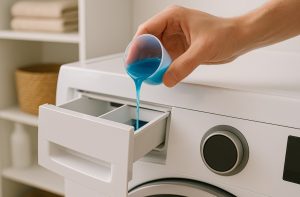
Using too much detergent creates excessive foam. The machine may delay spinning while it drains the suds, sometimes cancelling the spin entirely. Follow the manufacturer’s recommended dose, which is often smaller than people expect.
Step 4: Level the Machine

If your washing machine shakes violently during cycles, it may not be level. Many modern machines stop spinning if sensors detect excessive vibration. Use a spirit level and adjust the machine’s legs to stabilise it.
Step 5: Inspect the Drainage Hose

A kinked or twisted hose prevents water from draining. Carefully pull the machine forward, straighten the hose, and ensure there are no sharp bends. If the hose is damaged, replacing it is usually straightforward.
Step 6: Look for Blockages

If the hose appears fine, disconnect it and flush water through to check for blockages. A clogged pump can also stop drainage. Placing towels underneath before removing the hose will catch any excess water.
Step 7: Check the Power Source
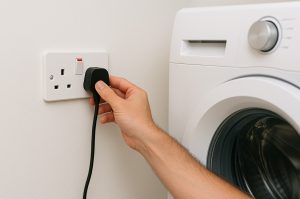
Confirm the plug is secure and check the fuse in the plug if the machine is completely unresponsive. A tripped circuit breaker may also be the cause.
Step 8: Inspect the Drive Belt

If the motor hums but the drum stays still, the belt may be loose or broken. Replacing it requires removing the back panel and refitting a new belt, specific to your machine model.
Step 9: Replace the Drive Motor
If none of the above solutions work, the motor may have failed completely. This repair is complex and should be carried out by a qualified technician.
When Should You Call a Professional?
While some problems are easy to resolve, others require expert knowledge and equipment. You should contact an engineer if:
- The motor brushes need replacement but you are unsure how to access them.
- The control board appears faulty.
- The drive motor has failed.
- The machine shows persistent faults despite basic troubleshooting.
Attempting advanced repairs without experience may risk further damage or void warranties. A professional diagnosis ensures the problem is properly resolved.
How Can You Prevent Spin Cycle Problems in the Future?
Preventive maintenance saves time and money in the long run. Cleaning the filter monthly prevents clogs, while using the correct detergent avoids excessive suds. Keeping the drum balanced by avoiding overloads reduces strain on the motor and bearings.
It is also important to keep the machine level. Regularly check the position of your washer, especially if it sits on an uneven floor. Some households schedule an annual service to extend the lifespan of their machine, which is particularly useful for older appliances.
How Much Does It Cost to Fix a Washing Machine That Won’t Spin in the UK?
| Issue | Typical Cost (UK) | Repair Type |
| Cleaning filter/pump blockage | £0–£80 | DIY or engineer |
| Drive belt replacement | £50–£100 | Engineer recommended |
| Motor brush replacement | £80–£150 | Engineer required |
| Full motor replacement | £120–£250 | Engineer required |
| Door lock replacement | £60–£120 | Engineer recommended |
If the cost of repair approaches half the price of a new machine, replacement may be the better option. Machines older than 8–10 years are more likely to develop multiple faults, making a new purchase more economical in the long run.
Why Is It Important to Identify the Difference Between Not Spinning and Not Draining?
Understanding the difference between these two faults helps you pinpoint the problem quickly.
If the machine is not spinning, the drum will not turn even though the water drains away. This suggests problems with the drive belt, motor, or imbalance.
If the machine is not draining, water will remain in the drum and prevent spinning from starting at all. Blocked hoses or pump faults are usually to blame in this case.
Conclusion
A washing machine may stop spinning for many reasons, from something as simple as an unbalanced load to more complex faults like motor failure. The first step is always to check the basics: redistribute the clothes, ensure the door is closed, and clean the filter. If those don’t work, inspect key components such as the drive belt and motor.
While some problems are easily fixed at home, others require the expertise of a professional engineer. Regular maintenance, such as cleaning filters and avoiding overloads, will reduce the likelihood of facing these problems. By taking care of your machine, you ensure it continues to run smoothly for years.
FAQs
What is the simplest fix for a washing machine that won’t spin?
Often the issue is an unbalanced load. Redistributing clothes evenly can solve the problem immediately.
Can too much detergent cause spin problems?
Yes, excess suds interfere with rinsing and may cause the machine to pause or skip the spin cycle.
Why does my machine make noise but not spin?
A broken or slipping drive belt is often the reason, especially if the motor is still running.
How do I know if my motor brushes are worn?
If the drum does not spin and you hear a humming noise, the brushes may need replacing.
Should I attempt to repair the drive motor myself?
No, replacing a motor is complex and should be handled by a professional technician.
How often should I clean my washing machine filter?
Cleaning it once a month is recommended to prevent drainage issues.
When is it better to replace a washing machine rather than repair it?
If your machine is more than 8–10 years old and requires expensive repairs, replacement is usually more cost-effective.



